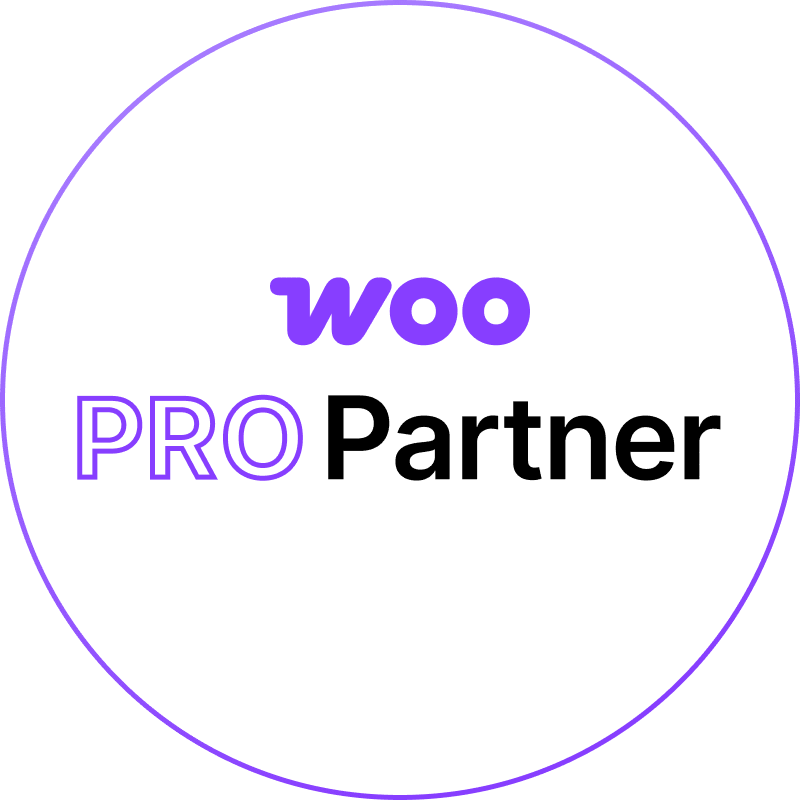Why Content Clusters Are Key to Your SEO Strategy
Content clusters are one of the most effective strategies for improving SEO in today’s competitive digital landscape. Unlike traditional approaches that focus on optimizing individual pages for isolated keywords, content clusters revolve around creating a network of interconnected content pieces centered on a core topic. This structure not only enhances search engine rankings but also provides users with a seamless experience, guiding them through in-depth, relevant content.
At the heart of this strategy is the concept of topical authority. By organizing content into clusters, businesses can demonstrate expertise in a particular area, making it easier for search engines to understand the depth and relevance of their content. For example, an online fitness brand might create a pillar page titled “Complete Guide to Strength Training,” supported by related blogs such as “Best Strength Training Exercises for Beginners” and “How to Create a Strength Training Schedule.”
This cohesive approach ensures that users can find all the information they need on a topic in one place, keeping them engaged longer and encouraging return visits. Search engines, in turn, reward this depth of content with higher rankings. For businesses, especially those working with an ecommerce SEO agency, adopting content clusters can lead to more targeted traffic, improved visibility, and ultimately, higher conversions.
The Pillar-Cluster Model Explained
The pillar-cluster model is the foundation of content cluster strategies. It involves creating a central pillar page that serves as the ultimate resource for a broad topic and linking it to supporting cluster pages that explore specific subtopics in detail. This internal linking structure strengthens the connection between pages, signaling to search engines that your site provides comprehensive coverage of the topic.
Pillar pages are typically long-form content pieces designed to answer high-level questions about a subject. They act as the hub of the content cluster, offering an overview and linking to related, more focused cluster content. For example, a travel company might have a pillar page titled “The Ultimate Guide to European Travel,” with cluster content such as “Top 10 Cities to Visit in Europe,” “How to Pack for a European Trip,” and “Best Budget Airlines in Europe.”
Cluster pages dive deeper into specific aspects of the pillar topic, answering niche queries and addressing user intent in more detail. Each cluster page links back to the pillar page, creating a strong web of interconnected content. This internal linking not only improves navigation for users but also helps search engines crawl and understand your site more effectively.
By implementing the pillar-cluster model, businesses can organize their content in a way that enhances both user experience and search engine visibility, leading to better rankings and increased engagement.
Benefits of Content Clusters for SEO
Content clusters offer a range of benefits that make them indispensable for modern SEO strategies. One of the most significant advantages is improved site structure. When content is organized into clusters, it becomes easier for users to navigate the site and find relevant information. For instance, a skincare brand with a pillar page on “Skincare Routines for Every Skin Type” and clusters like “Morning Skincare Routine” and “Evening Skincare Routine” creates a logical flow that keeps users engaged.
This improved structure also helps search engines understand your site’s content hierarchy. By linking related pages within a cluster, you signal to search engines that your site offers comprehensive coverage of a topic, boosting your chances of ranking for related keywords. This is particularly valuable for competitive industries where building topical authority can make or break your rankings.
Another key benefit of content clusters is enhanced topical relevance. By addressing multiple aspects of a topic through clusters, you demonstrate depth and expertise, which search engines reward. For example, a site selling sustainable products could create clusters around topics like “Eco-Friendly Living,” “Sustainable Fashion,” and “Zero-Waste Tips,” each linking back to a pillar page on sustainability.
Content clusters also drive user engagement by keeping visitors on your site longer. When users find a comprehensive resource that links to other valuable content, they’re more likely to explore multiple pages. This reduces bounce rates and increases session duration—metrics that signal quality to search engines.
By leveraging the power of content clusters, businesses can achieve better SEO results, build trust with their audience, and create a more user-friendly online experience.
How Content Clusters Impact Google’s Algorithm
Google’s algorithm prioritizes websites that provide users with high-quality, relevant content. Content clusters align perfectly with this focus by delivering in-depth coverage of a topic, organized in a way that both users and search engines can easily navigate. This structure not only enhances user experience but also helps Google understand your site’s authority in a specific niche.
One of the key ways content clusters influence Google’s algorithm is through topical relevance. By grouping content around a central theme, you signal to Google that your site is a trusted resource on the subject. For example, if you have a pillar page on “Digital Marketing Trends” linked to cluster content like “Social Media Trends in 2025” and “How AI is Changing Marketing,” Google sees your site as a comprehensive authority on digital marketing.
Another advantage of content clusters is their ability to earn featured snippets and other rich results. These snippets often pull information from well-organized pages that answer specific user queries. When your cluster content addresses common questions or provides step-by-step guides, it increases the likelihood of being featured in these prominent search results, driving more traffic to your site.
Internal linking within clusters also enhances your site’s crawlability, making it easier for search engine bots to discover and index your content. This improves your chances of ranking for multiple keywords related to your topic. For instance, an ecommerce SEO agency might use a cluster strategy to dominate keywords like “SEO for online stores,” “Boosting ecommerce conversions,” and “Mobile optimization for ecommerce.”
By aligning with Google’s focus on user intent, structured content, and topical depth, content clusters offer a strategic advantage for improving rankings and search visibility.
Identifying Topics and Keywords for Clusters
Choosing the right topics and keywords is the foundation of a successful content cluster strategy. This step requires thorough research to ensure your clusters address user needs, align with your business goals, and target keywords that can drive significant traffic.
Begin by identifying a broad, high-level topic for your pillar page. This should be a subject relevant to your industry and audience, with enough depth to support multiple subtopics. For instance, a real estate company might create a pillar page on “The Ultimate Guide to Buying a Home” and use related topics like “Home Loan Options,” “Steps to Close on a Home,” and “Tips for First-Time Buyers” for its clusters.
Once you’ve identified your pillar topic, conduct keyword research to find supporting subtopics. Tools like SEMrush, Ahrefs, or Google Keyword Planner can help you identify long-tail keywords that align with user queries. Look for terms with decent search volume and low to medium competition, as these are often easier to rank for.
It’s also essential to consider user intent when selecting keywords. Determine whether users are seeking informational, navigational, or transactional content and tailor your clusters accordingly. For example, if users are searching for “best running shoes for beginners,” your content should include detailed comparisons and buying tips rather than generic information about running.
Finally, review competitor strategies to identify gaps in their content. If competitors aren’t covering certain angles or answering specific questions, you can use these opportunities to create unique cluster content that sets your site apart.
By carefully selecting topics and keywords, you ensure that your content clusters are both relevant to users and optimized for search engine success.
Creating High-Quality Pillar Pages
The pillar page is the centerpiece of your content cluster strategy, serving as the ultimate resource on a broad topic. A well-crafted pillar page is comprehensive, user-friendly, and optimized for both search engines and readers. Its purpose is to provide an overview of the topic while linking to cluster content that explores subtopics in greater detail.
To create a high-quality pillar page, start with a strong structure. Break the content into clear sections using headings and subheadings that make it easy for users to scan. For example, a pillar page on “Sustainable Living” might include sections like “Why Sustainability Matters,” “Practical Tips for Eco-Friendly Living,” and “Resources for Going Green.”
Depth is another critical component of a successful pillar page. While the content should be thorough, it doesn’t need to cover every detail—that’s what the cluster pages are for. Instead, focus on providing a high-level overview and linking to cluster content for more information. For instance, a paragraph on “Reducing Plastic Waste” in the pillar page could link to a detailed guide on “How to Eliminate Single-Use Plastics from Your Daily Life.”
Visual elements like infographics, videos, and images enhance the user experience and make your pillar page more engaging. These elements also increase the likelihood of earning backlinks, as other sites are more likely to reference visually appealing, informative content.
Lastly, optimize your pillar page for SEO by incorporating the primary keyword naturally into the title, headings, and body text. Include internal links to cluster pages and external links to authoritative sources to demonstrate credibility.
By investing in high-quality pillar pages, businesses can establish themselves as authoritative resources, drive traffic, and build a strong foundation for their content clusters.
Developing Supporting Cluster Content
Supporting cluster content plays a vital role in the content cluster strategy by expanding on the subtopics introduced in the pillar page. These individual pieces of content dive deeper into specific areas, answering detailed questions and addressing user intent. Well-crafted cluster content strengthens your site’s topical authority and improves your overall SEO performance.
Each cluster page should focus on one subtopic, optimized for a relevant long-tail keyword. For instance, if your pillar page is “The Ultimate Guide to Digital Marketing,” your cluster content might include blogs like “How to Use Influencer Marketing Effectively,” “Email Marketing Best Practices,” or “Social Media Advertising Trends in 2025.” These pieces provide detailed insights while linking back to the pillar page for context.
Strategically placed internal links are critical for connecting cluster pages to the pillar page and to each other. This internal linking structure helps search engines understand the relationship between pages, improving crawlability and visibility. For example, a cluster page about “Optimizing Instagram Ads” should link back to the pillar page and include links to related cluster pages, such as “Facebook Ads vs. Instagram Ads.”
It’s also essential to tailor cluster content to specific user intent. If a keyword suggests informational intent, such as “What is Retargeting in Digital Marketing?” the cluster page should focus on educating the reader with a detailed explanation and examples. Conversely, a transactional query like “Best Retargeting Tools” would require a product comparison or recommendations.
By developing high-quality, user-focused cluster content, businesses can build a cohesive network of resources that satisfies user needs and boosts search rankings.
Measuring the Performance of Content Clusters
To ensure your content clusters are delivering results, it’s important to measure their performance using key SEO metrics. This analysis helps identify what’s working, pinpoint areas for improvement, and refine your strategy to maximize impact.
Start by tracking organic traffic to your pillar and cluster pages. Tools like Google Analytics and SEMrush can provide insights into which pages are attracting visitors and how users navigate through your cluster. For example, if users frequently land on a cluster page about “SEO Basics” and then click through to your pillar page on “Complete SEO Guide,” it indicates that the cluster structure is effectively guiding user journeys.
Engagement metrics, such as time on page, bounce rates, and pages per session, are also valuable indicators of cluster performance. High engagement suggests that users find your content helpful and relevant, while low engagement may signal issues like poor content quality or mismatched user intent. For instance, if a cluster page on “How to Create a Content Calendar” has a high bounce rate, revising the content to better address user needs could improve its performance.
Keyword rankings are another critical metric to monitor. Evaluate how well your cluster pages are ranking for their target keywords and whether they’re contributing to the visibility of the pillar page. If a specific cluster page isn’t ranking well, consider optimizing its content, adding backlinks, or refining its internal links.
Finally, assess conversions and goal completions related to your cluster pages. Whether your objective is newsletter sign-ups, product purchases, or service inquiries, tracking these metrics provides a clear picture of how your clusters support business goals.
Regularly measuring these metrics ensures that your content clusters remain effective and aligned with your SEO strategy.
Common Mistakes to Avoid When Building Content Clusters
While content clusters offer significant SEO benefits, certain mistakes can undermine their effectiveness. Avoiding these pitfalls ensures that your strategy delivers the desired results.
One common mistake is selecting overly broad or irrelevant topics for your pillar pages. If the topic is too broad, it may lack focus, making it difficult to create cohesive cluster content. On the other hand, irrelevant topics may fail to resonate with your target audience, limiting engagement and conversions. For example, a pillar page on “Healthy Living” might be too broad, while “Low-Carb Diet Plans” offers a more focused and actionable topic.
Another mistake is neglecting internal linking. Without proper links connecting the pillar page and cluster content, search engines and users may struggle to navigate your site. Ensure that every cluster page links back to the pillar page and includes contextual links to related cluster pages.
Failing to update outdated content is another issue. Search engines prioritize fresh, relevant information, so regularly revisiting and refreshing your cluster content is essential for maintaining rankings. For instance, a cluster page on “SEO Trends” from two years ago may no longer be relevant, requiring updates to reflect current best practices.
Finally, avoid keyword stuffing or creating low-quality content. Each cluster page should provide genuine value to users, aligning with their intent and addressing their needs. Poorly written or overly promotional content can harm user trust and lower your rankings.
By steering clear of these common mistakes, businesses can create content clusters that effectively boost SEO performance and user engagement.
Future-Proofing Your SEO with Content Clusters
As search engines continue to evolve, content clusters remain a forward-thinking strategy that aligns with the future of SEO. Their focus on topical depth, user experience, and structured navigation ensures they stay relevant in an increasingly competitive digital landscape.
To future-proof your SEO with content clusters, start by regularly expanding and updating your clusters. As new trends and user queries emerge, create additional cluster content to address these changes. For example, a pillar page on “Digital Marketing” might gain new cluster pages on “AI in Marketing” or “Sustainability in Branding” as these topics grow in importance.
Investing in advanced tools and analytics is another way to stay ahead. Platforms like SEMrush and Ahrefs can help you identify new keyword opportunities and track performance across your clusters. These insights allow you to refine your strategy and maintain a competitive edge.
Embrace multimedia content within your clusters to cater to diverse user preferences. Incorporating videos, infographics, and interactive elements enhances engagement and increases the likelihood of earning backlinks. For instance, a video tutorial on “Optimizing Blog Posts for SEO” can complement a written guide, attracting a broader audience.
Finally, prioritize user intent and experience in every aspect of your cluster strategy. Search engines increasingly value content that provides real value to users, so focusing on their needs ensures your clusters remain effective and impactful.
By future-proofing your SEO with content clusters, businesses can achieve sustained growth, improved rankings, and a stronger online presence.

















